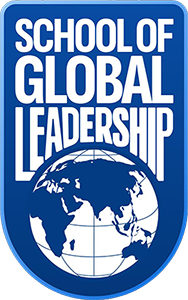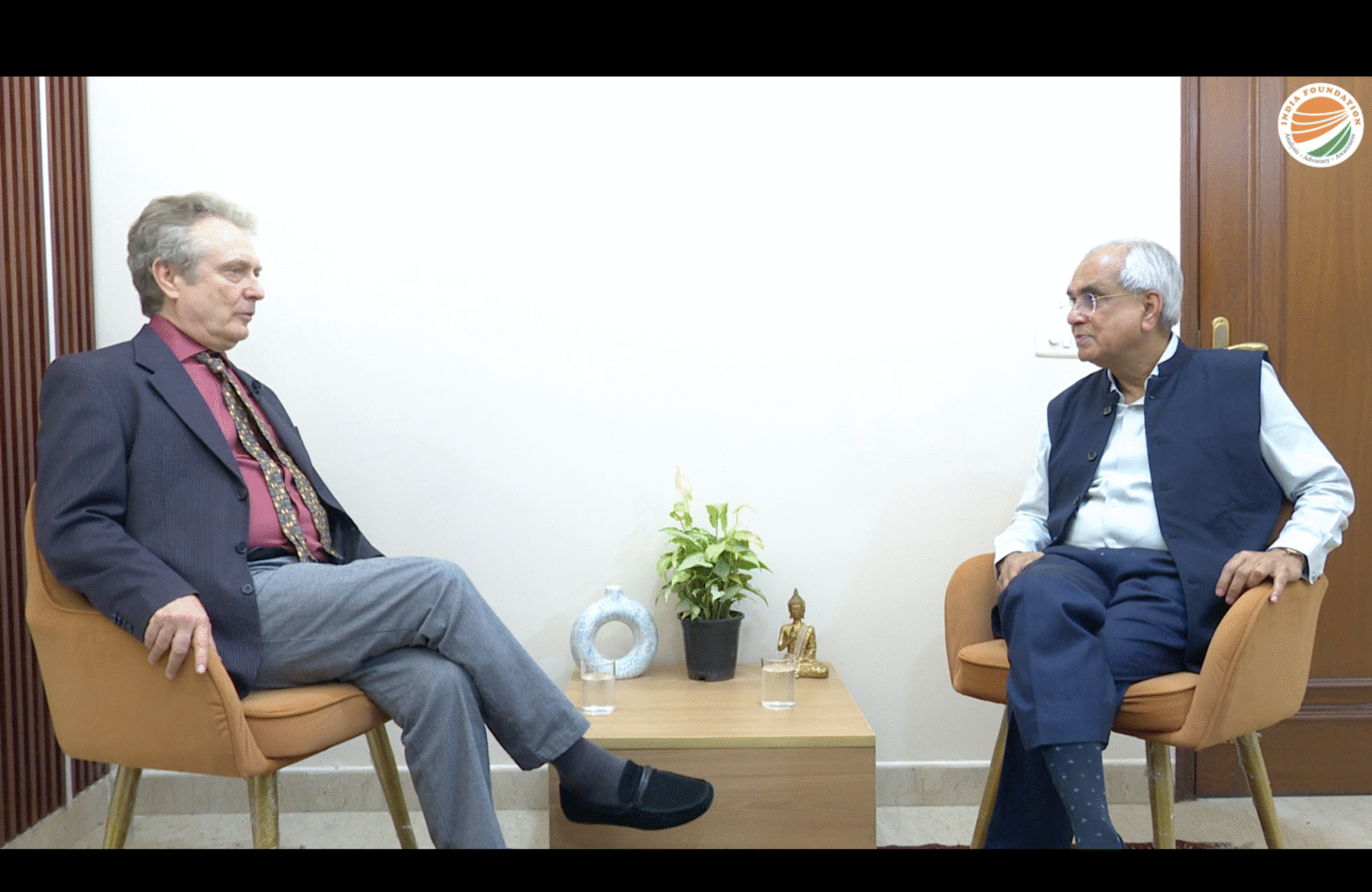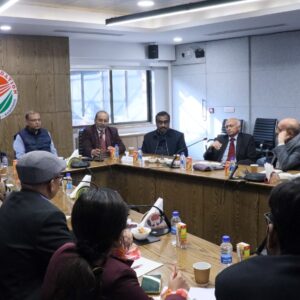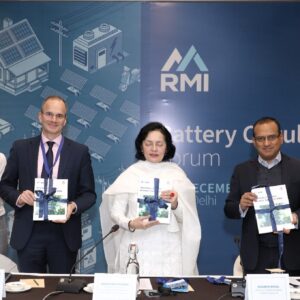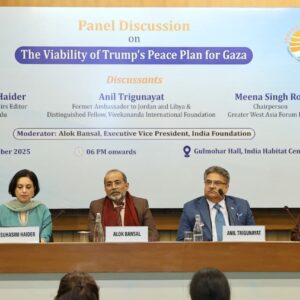Come Carpentier:
My first question relates to what is happening in the field of tariffs and free trade agreements, especially regarding President Donald Trump’s unpredictable and somewhat chaotic tariff policies. What is your view on how India should and can respond to Trump’s apparent aim of forcing an open market for American goods in India, while simultaneously imposing high tariffs on Indian exports?
Rajiv Kumar:
Unfortunately for Thomas Friedman, the world is no longer flat, which I find a pity because I believe a flat world is a good world. A flat world allows goods, services, and human beings to travel freely from one place to another, bringing the best talent and products to the world market. This enables consumers everywhere to benefit from what is available globally, creating a more interconnected and resourceful market.
A non-flat world with valleys, cliffs, and precipices essentially means the opposite: that we will divide the world. A fragmented world was what we saw before the Second World War, which is one of the reasons for the Great Depression. I fear I will see this kind of regression in the global economy. As an economist, I hope this will be temporary. Mr Trump himself, as you said, is unpredictable. We don’t know: he started with a 125% tariff for China and ended up with 30%. He also discussed banning TikTok, but it has already had three extensions. Therefore, I am unsure whether his announcement of high tariffs for Indian goods will be implemented; we will have to face it when it happens, but I am uncertain what it will be.
But all of this implies one thing regarding India’s trade policy: we must achieve global competitiveness in all sectors we want to operate. However, it’s not feasible to do so for every sector, so we need to carefully select the industries in which we aim to be competitive globally. The Production Linked Incentive (PLI) scheme, which was initiated when I was at NITI Aayog, serves as a good example. But at present, I believe it has lost focus and become too broad, so we need to refocus and choose 5-6 industries—whatever number you think can succeed—and dedicate efforts to achieving global competitiveness there. If we do that — and it is essential that we do — then any tariffs proposed or imposed by Mr Trump will not matter. Moreover, if his goods are competitive and they enter India, it will only benefit Indian consumers. So, I am not opposed to it. I hope all these issues are addressed with proper diligence in the free trade negotiations proposed with the US, and I look forward to seeing how those proceedings unfold.
Come Carpentier:
In this regard, as you know, India’s focus has been on benefiting from the desired change in supply chains. Particularly concerning high-tech goods, for example, India has been working hard to position itself as an alternative to China in manufacturing a range of industrial goods. As we have seen, Trump has adopted a very hostile stance, stating that no major American companies such as Apple should transfer their manufacturing facilities to India, for the simple reason that he wants them not only to stay in America but also to bring back those that have moved abroad, to sell rather than manufacture overseas. How do you think India should respond to this very new, I would say, mercantilist policy, which seems to imply that I shouldn’t buy from you unless I lack the product, but I should sell to you—especially high-value goods—so that I accumulate profits and you do not? In other words, the idea is that the deficit should not be mine but yours. What is your opinion on that?
Rajiv Kumar:
A mercantilist attitude or policy often appeals to the domestic constituency and is primarily pursued for that reason. It is not a genuine policy because mercantilism has limited scope; it assumes that being competitive depends on having the resources to become a producer and exporter in any chosen field. America, however, is not so abundant in skilled labour, and I believe they or Trump’s advisors recognise this. Therefore, it will be impossible for the US to become a producer across all industries and to reshore them as they wish. The best example currently is Nippon Steel. There were threats to block the US Steel merger, but yesterday, Nippon Steel completed the deal and took over US Steel.
So, you know mercantilism is a losing, a lose-lose proposition, while free trade based on your competitive advantages is a win-win. I believe this won’t last, and reality will catch up sooner rather than later. Moreover, the US has been successful in the services economy and the high-tech, network economy, including the Internet. I respect the US for its innovative capabilities and technological advancements. I think it would be better for them not to get entangled in China Plus One but instead to follow their own path and direction in providing the world with goods and services at which they excel and are innovative. I believe they will stay as vibrant an economy as ever. So, I see this as a detour that could cost the US quite a bit, and I hope it won’t continue. It is risky to turn the US into a manufacturing giant when much of its GDP now comes from services, around 60-70%.
Come Carpentier:
Yes, and I believe the primary concern in the US is that China is surpassing them in some of their key areas of excellence, which is very difficult for them to accept. That said, as you know, since 1998, the World Trade Organisation has exempted electronic goods from the usual restrictions that govern exports of goods. India has been a significant beneficiary because it is now probably the third-largest digital economy in the world. If this were to change and some tariffs and duties were imposed on the export of electronic communication goods, how should India respond to that?
Rajiv Kumar:
When we signed a treaty on electronic and hardware goods, agreeing to zero tariffs internationally, many people criticised it as impractical for India. A well-known Stanford professor, Paul Yograj, holds the best patent in this area. He pointed out that under this scheme, electronic hardware imports into India would be many times higher than oil imports because electronics hardware will be the foundation of everything, especially the digital economy and artificial intelligence driven by algorithms. He estimated imports could reach up to 500 billion. I mention this because I would prefer a tariff-based electronics hardware economy, as it would allow India, a late starter by all accounts, to develop its electronic hardware industry and make it competitive, aligning with its skills and competitiveness in the software sector.
So far, we have always been a software giant. We have taken advantage of wage arbitrage. I believe it’s time to recognise that, as you’ve seen over the past year, the government’s MeiTY department has focused significantly on enhancing our capacities in semiconductors, chips, foundries, and related areas. I believe we must continue this effort and attract major companies like TSMC and others to our country. I wouldn’t oppose the idea of tariffs if necessary. My main concern would be restrictions on technology transfer, which is a possible next step Mr. Trump might consider. Therefore, we need to seek diversified sources of technology. Fortunately, such sources exist globally. The US is a significant one, but not the sole technology provider. The electronics hardware industry, which I emphasise is essential going forward, requires us to be largely self-reliant- not entirely self-sufficient, as that wouldn’t be appropriate- but capable of absorbing innovation and developing our advancements as we proceed.
Come Carpentier:
This leads me to the topic of trade pacts and trade associations, which are both debated and embraced in this world. For example, the Regional Comprehensive Economic Partnership (RCEP) has been primarily shaped between China and ASEAN. India has so far declined to join, despite considerable pressure or at least encouragement from China and other member countries to include India, as it is seen as a very important potential partner in that association. Do you think it was right for India to remain out, or are there conditions under which India might join in the coming years?
Rajiv Kumar:
This question has persisted since the inception of RCEP. I was part of the discussions about how and why India should join. The concern India has is that RCEP could become another pathway for Chinese goods to enter the country. As you know, China accounts for over 30% of global manufacturing today. There are several industries where they hold near monopolies. Therefore, there has been a fear that if India joins, its industry could suffer greatly or even be wiped out. I am not sure if those concerns have changed yet. At that time, I advocated that India should focus on a set of industries where we can be regional and possibly global leaders, which I mentioned at the start of my interview. I believe it is not impossible, but challenging, and once we achieve the necessary scale and global competitiveness, then we should consider opening our doors to RCEP.
Otherwise, we have bilateral trade agreements with all ASEAN economies, including ASEAN itself and its member nations like Thailand, Malaysia, and others. We also continue bilateral negotiations with China, but remember that we face a significant trade deficit with China. They are our largest trading partner, yet the trade deficit is approximately 78 billion dollars out of a total trade of 120 billion dollars. It is unsustainable to maintain this gap. My current suggestion is that we should invite Chinese investment into India and open our doors across nearly all sectors, except the strategic ones. I recently visited Abu Dhabi, where we held bilateral discussions with Chinese experts, who are willing to invest. We aim to make India an export hub for their industries, similar to what Japan and Korea have achieved. Therefore, I believe it is time for us to welcome Chinese Foreign Direct Investment, encourage them to develop export-oriented capacity, and the sooner we join RCEP, the better.
Come Carpentier:
In fact, I was also speaking to someone important in China before yesterday, and they were saying the same thing. Now, we want to enter and establish ourselves in India. Clearly, there is momentum in China that India should probably seize.
Rajiv Kumar:
Absolutely.
Come Carpentier:
I have a question related to the part of the world we haven’t discussed much, apart from perhaps South America and Africa, where things are progressing at their own pace. Regarding the European Union (EU), there has been a long-standing negotiation and discussion about a free trade agreement. However, it always seems to be halted, falling short of reaching the goal. There is clearly a greater momentum from the EU’s side. One of the major issues has been retail trade, right? That’s where India has needed to protect its small and medium manufacturing industries, as well as its small shops. We know that in Europe, many small businesses have been devastated by the invasion of hypermarkets, supermarkets, and huge shopping centres. How do you think the negotiation is progressing now, and do you believe it is close to conclusion? In other words, will India soon have a free trade agreement with the EU, and what would be the main terms of that?
Rajiv Kumar:
It’s been 18 years in the making, hasn’t it? During that time, a generation has passed, and I remember when India’s main objections were to importing expensive cars, including German ones. European objections, driven mainly by the French, were centred on preventing the media industry from opening up to India. They also wanted all their wines imported here, and so on. I have always been a proponent of full liberalisation of retail trade, and I have written papers on the subject. I have even advised the government about it. When I was the Director and CEO of an organisation called ICRIER, I argued that liberalising retail trade globally would mainly bring efficiency to the market. As for the ‘mom-and-pop’ stores, the reality is that organised retail accounts for only 4%. Now, it’s 8% of India’s total retail trade. Even if this grows at whatever rate you might consider, mom-and-pop stores are unlikely to disappear.
What has happened in India, which you may not be aware of, is the growth of quick commerce, with larger companies like Amazon, Flipkart, and even Reliance now joining. This poses a threat to small, family-run stores, not the big supermarkets or hypermarkets, which were never considered a real threat. Retail trade should be liberalised immediately. It has become a factor in the real estate market, and that needs to end. I believe foreign retailers will enter, providing a healthy competitive challenge to Indian retailers, and they will create the employment we need. Therefore, this should happen. I hope that entities like Carrefour and Selfridges, and others present in India, do not become obstacles to the India-EU trade prospects. While I remain sceptical about whether this trade agreement will be completed, because what I mentioned might not be acceptable here, especially regarding France and Germany, and the UK already has a bilateral trade agreement with India—one of the main drivers for this deal is now absent. So, I am uncertain. Nonetheless, I hope it happens, as I believe it would be a very strong win-win for both sides. However, at the moment, I cannot see a definitive date for its conclusion.
Come Carpentier:
I suppose this brings us to the conclusion that, from what I observe, you are definitely an advocate of free trade as much as possible, and therefore you probably wish for many of the tariffs applicable in India to be gradually reduced in most cases, correct? Because, based on what we see now, there is both this pressure to liberalise and open the markets, and on the other hand, a fear that certain sectors of the Indian economy could suffer, which is a very sensitive issue for politicians in particular. But from what you have said, it seems to me that you do not see a significant threat from Trump’s policies, at least in the long term. You believe that India will be able to adapt and may even benefit from removing some of the hurdles to the import of various foreign goods.
Rajiv Kumar:
My own view is that foreign trade is not the primary driver of India’s economy or its progress. It is the domestic economy, given our size and all other factors, and more specifically, our private enterprise, which has been the true engine for millennia. Yes, you know. And perhaps, that’s a big if, but I firmly believe that the day our government shifts from merely regulating and supervising to actively promoting private enterprise, India will be able to compete with any country in the world. We have done so in the past. Our enterprises once stretched from Jakarta to Rome, a footprint well documented by William Dalrymple. That’s the point. The sooner we adopt this approach, the better for us. Otherwise, no matter how many free trade negotiations or agreements we enter into, they will not yield the desired results. Our bilateral agreements with Thailand, Korea, and Sri Lanka show this — they have not produced the outcomes we hoped for, and we are in deficit with these countries. In conclusion, tariffs, non-tariffs, and trade policies will come and go. India must focus intensely on achieving global competitiveness and scale within our domestic economy — and that will only happen if the government becomes a strong champion and supporter of India’s renowned private sector. We are simply waiting for that moment, and once it arrives, everything else will follow.
Come Carpentier:
This is a very apt conclusion that reminds us that despite all the efforts India has made in past years to strengthen economic ties with countries that used to be part of its sphere of co-prosperity, even in those nations, China is making increasingly significant progress, and India is struggling to catch up. This likely indicates that a change in strategy should be considered. I am very grateful to Dr Rajiv Kumar for his wise and experienced comments, and I also thank the India Foundation for facilitating this dialogue.
Rajiv Kumar:
Thank you very much.
Brief Bios:
Dr. Rajiv Kumar, former Vice Chairman of NITI Aayog, recently resumed his chairmanship of Pahle India Foundation, a not-for-profit policy think tank, established by him in 2013. He served in the government as Economic Advisor with the Department of Economic Affairs (Ministry of Finance) during 1991-1995 and took over as Vice Chairman of NITI Aayog in September 2017, with the rank of Cabinet Minister and served until April 2022. His stints with the corporate sector include serving as Chief Economist of the Confederation of Indian Industries (CII) from 2004-2006 and later as Secretary General of the Federation of Indian Chambers of Commerce and Industry (FICCI), 2011-2013. Dr. Kumar holds a Ph.D. in Economics from Lucknow University (1978) and a D.Phil. from Oxford University (1982).
Mr. Come Carpentier is a Distinguished Fellow with India Foundation.

